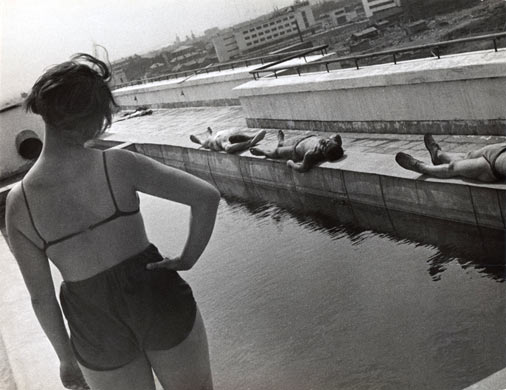Golden Ratio
Tuesday, 22 November 2011
Golden Ratio
Tuesday, 15 November 2011
Idris Khan
Idris Khan
His work comprises digital photographs that superimpose iconic text or image sets into a single frame (for instance, every page of the Qur'an, every Beethoven sonata, every William Turner postcard from Tate Britain), or every Bernd and Hilla Becher spherical gasholder.
Khan received a First in his BA from the University of Derby in 2000 and his MA with Distinction from the Royal College of Art in 2004. He has shown work internationally in many exhibitions including those at the Taidehalli in Helsinki, Musée de l'Élysée in Switzerland, Victoria Miro Gallery in London and the Saatchi Gallery in London. He also created the cover art for Editors album An End Has A Start which utilises techniques he used in his Becher on Becher series of industrial buildings, in this case a gas-works.
He is represented by Galerie Thomas Schulte (Berlin), Victoria Miro Gallery (London), Yvon Lambert Gallery (Paris) and Fraenkel Gallery (San Francisco).


Alexander Rodchenko
Alexander Rodchenko-:
Rodchenko was one of the most versatile Constructivist and Productivist artists to emerge after the Russian Revolution. He worked as a painter and graphic designer before turning to photo-montage and photography. His photography was socially engaged, formally innovative, and opposed to a painterly aesthetic. Concerned with the need for analytical-documentary photo series, he often shot his subjects from odd angles—usually high above or below—to shock the viewer and to postpone recognition. He wrote: "One has to take several different shots of a subject, from different points of view and in different situations, as if one examined it in the round rather than looked through the same key-hole again and again."


Monday, 14 November 2011
Stephen Gill Experiments
For my Stephen Gill experiments I decided to take inspiration with his back of billboards photo's and I thought about instead of having billboards I thought about having the back of televisions and what there is behind them that we don't see like the wiring for example.
I decided to take pictures of the wiring behind the Television as no one really looks behind there or cares what there is behind. Many people diminish the importance of these wires and don't exactly care about them, however I believe they have much more meaning. For a start these wires contain the electricity to work the television, without them the circuit would not be complete. Also the wires all have there own small groups of different colours and lengths which divides them all into little communities as if they were some sort of family or friends, they tangle each other just as people do when they hug or maybe fight. I find this also links well with Stephens Gills work because of the thought and imagination how there is more to these wires than just copper and plastic.
I took another picture off the back of another Television thinking about what else I could do and how I could improve just the fact of having the back as a picture.
I then decided to have a picture with someone in (in this case me) where it was as if they were looking at the back of this television as if they were actually watching it normally which I found a very qwerky idea and one which I think that works very well. I took more with me situated in different places.
In my opinion although these pictures are not the best quality and are quite dark I still find the use off inanimate objects such as the Television which can be used to watch programs, is used differently or a story is just added to it which no one really could have thought about. I find this links in very well with Stephen Gill's work as there is a lot of imagination in these ideas.
I decided to take pictures of the wiring behind the Television as no one really looks behind there or cares what there is behind. Many people diminish the importance of these wires and don't exactly care about them, however I believe they have much more meaning. For a start these wires contain the electricity to work the television, without them the circuit would not be complete. Also the wires all have there own small groups of different colours and lengths which divides them all into little communities as if they were some sort of family or friends, they tangle each other just as people do when they hug or maybe fight. I find this also links well with Stephens Gills work because of the thought and imagination how there is more to these wires than just copper and plastic.
I took another picture off the back of another Television thinking about what else I could do and how I could improve just the fact of having the back as a picture.
In my opinion although these pictures are not the best quality and are quite dark I still find the use off inanimate objects such as the Television which can be used to watch programs, is used differently or a story is just added to it which no one really could have thought about. I find this links in very well with Stephen Gill's work as there is a lot of imagination in these ideas.
Subscribe to:
Posts (Atom)







